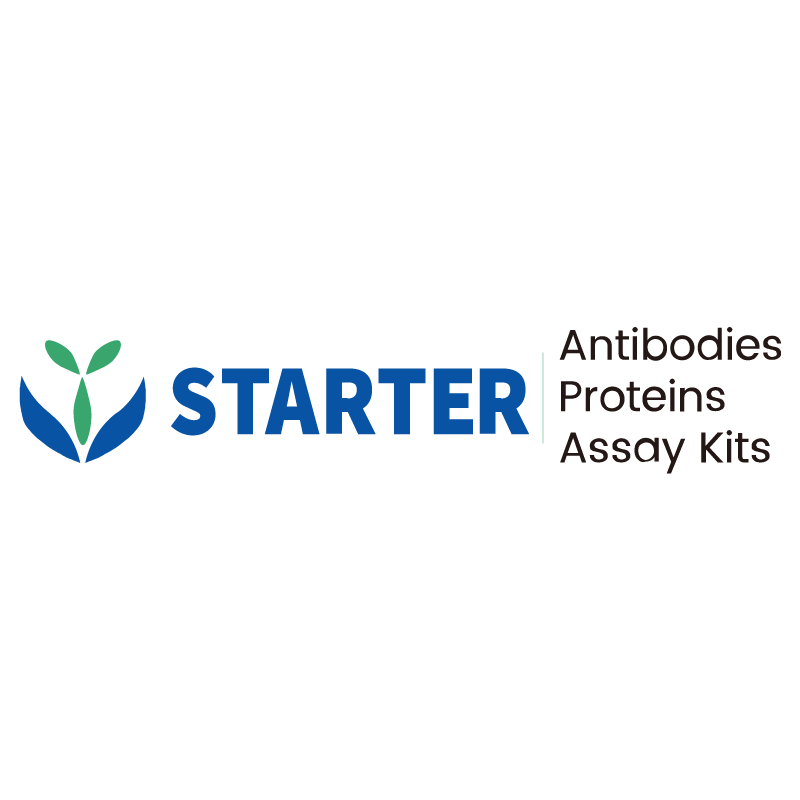WB result of ATG7 Recombinant Rabbit mAb
Primary antibody: ATG7 Recombinant Rabbit mAb at 1/1000 dilution
Lane 1: HeLa whole cell lysate 20 µg
Lane 2: Jurkat whole cell lysate 20 µg
Lane 3: HEK-293 whole cell lysate 20 µg
Lane 4: HT-29 whole cell lysate 20 µg
Secondary antibody: Goat Anti-rabbit IgG, (H+L), HRP conjugated at 1/10000 dilution
Predicted MW: 78 kDa
Observed MW: 85 kDa
This blot was developed with high sensitivity substrate
Product Details
Product Details
Product Specification
| Host | Rabbit |
| Antigen | ATG7 |
| Synonyms | Ubiquitin-like modifier-activating enzyme ATG7; ATG12-activating enzyme E1 ATG7; Autophagy-related protein 7 (APG7-like; hAGP7); Ubiquitin-activating enzyme E1-like protein; APG7L |
| Immunogen | Synthetic Peptide |
| Location | Cytoplasm |
| Accession | O95352 |
| Clone Number | S-1279-201 |
| Antibody Type | Recombinant mAb |
| Isotype | IgG |
| Application | WB, IHC-P, ICC |
| Reactivity | Hu, Ms |
| Positive Sample | HeLa, Jurkat, HEK-293, HT-29, human endometrial cancer, human pancreas, human testis, human tonsil |
| Purification | Protein A |
| Concentration | 0.5 mg/ml |
| Conjugation | Unconjugated |
| Physical Appearance | Liquid |
| Storage Buffer | PBS, 40% Glycerol, 0.05% BSA, 0.03% Proclin 300 |
| Stability & Storage | 12 months from date of receipt / reconstitution, -20 °C as supplied |
Dilution
| application | dilution | species |
| WB | 1:1000 | Hu |
| IHC-P | 1:250 | Hu |
| ICC | 1:500 | Hu |
Background
ATG7 is an essential autophagy effector enzyme that plays a crucial role in the autophagy process, which is vital for cellular degradation and recycling. Structurally, ATG7 is a symmetric homodimer with two catalytic cysteine residues. It functions as an E1-like enzyme, activating two major ubiquitin-like proteins involved in autophagy: ATG12 and LC3. These proteins are then conjugated to other autophagy-related molecules, such as ATG5 and phosphatidylethanolamine, to facilitate the formation of autophagosomes. Beyond its role in autophagy, ATG7 is also involved in regulating immunity, cell death, protein secretion, and even cell cycle progression in response to metabolic stress.
Picture
Picture
Western Blot
WB result of ATG7 Recombinant Rabbit mAb
Primary antibody: ATG7 Recombinant Rabbit mAb at 1/1000 dilution
Lane 1: mouse spleen lysate 20 µg
Secondary antibody: Goat Anti-rabbit IgG, (H+L), HRP conjugated at 1/10000 dilution
Predicted MW: 78 kDa
Observed MW: 85 kDa
This blot was developed with high sensitivity substrate
Immunohistochemistry
IHC shows positive staining in paraffin-embedded human endometrial cancer. Anti-ATG7 antibody was used at 1/250 dilution, followed by a HRP Polymer for Mouse & Rabbit IgG (ready to use). Counterstained with hematoxylin. Heat mediated antigen retrieval with Tris/EDTA buffer pH9.0 was performed before commencing with IHC staining protocol.
IHC shows positive staining in paraffin-embedded human pancreas cancer. Anti-ATG7 antibody was used at 1/250 dilution, followed by a HRP Polymer for Mouse & Rabbit IgG (ready to use). Counterstained with hematoxylin. Heat mediated antigen retrieval with Tris/EDTA buffer pH9.0 was performed before commencing with IHC staining protocol.
IHC shows positive staining in paraffin-embedded human testis. Anti-ATG7 antibody was used at 1/250 dilution, followed by a HRP Polymer for Mouse & Rabbit IgG (ready to use). Counterstained with hematoxylin. Heat mediated antigen retrieval with Tris/EDTA buffer pH9.0 was performed before commencing with IHC staining protocol.
IHC shows positive staining in paraffin-embedded human tonsil. Anti-ATG7 antibody was used at 1/250 dilution, followed by a HRP Polymer for Mouse & Rabbit IgG (ready to use). Counterstained with hematoxylin. Heat mediated antigen retrieval with Tris/EDTA buffer pH9.0 was performed before commencing with IHC staining protocol.
Immunocytochemistry
ICC shows positive staining in HT-29 cells. Anti- ATG7 antibody was used at 1/500 dilution (Green) and incubated overnight at 4°C. Goat polyclonal Antibody to Rabbit IgG - H&L (Alexa Fluor® 488) was used as secondary antibody at 1/1000 dilution. The cells were fixed with 100% ice-cold methanol and permeabilized with 0.1% PBS-Triton X-100. Nuclei were counterstained with DAPI (Blue). Counterstain with tubulin (Red).
Expression Atlas
Expression of ATG7 in tumor tissue.
Expression of ATG7 in human tissue.


